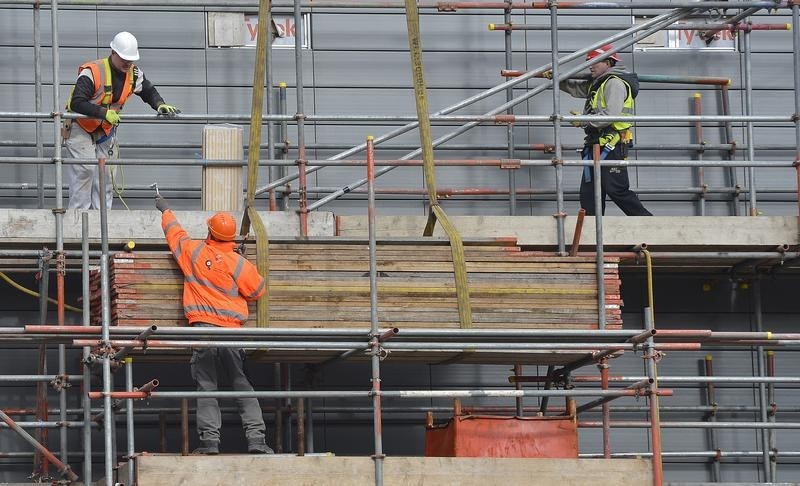By David Milliken and William Schomberg
LONDON (Reuters) - British economic growth got back on track in the second quarter but the strength of the pound hurt manufacturers, putting the Bank of England in a tricky spot as it gets closer to raising interest rates.
The economy grew by 0.7 percent in the three months to June, the Office for National Statistics said on Tuesday, in line with forecasts and above the long-run average. It followed an unexpected slowdown to 0.4 percent in the first three months of 2015.
But the figures showed an increased reliance on domestic demand, with business and financial services powering ahead, while factory output suffered a rare quarterly fall.
"Sterling strength has clearly been a key driver behind the re-emergence of the two-speed economy, making life more difficult for export-focused UK manufacturers," Investec economist Victoria Clarke said.
Oil and gas output had one of its biggest leaps in a generation, after a tax cut for the sector in March.
Sterling rose almost a cent against the dollar
Last year Britain recorded its fastest growth in eight years and BoE Governor Mark Carney said this month that the decision on when to raise interest rates from their record low 0.5 percent would come into focus around the end of the year.
Economists expect a minority of policymakers to vote to raise rates as soon as next week's BoE meeting, encouraged by signs of stronger wage growth and an economy close to full capacity.
But other policymakers have said sterling strength is likely to keep a lid on prices, reducing the need for higher rates, leaving Carney with a difficult balancing act when he presents the Bank's latest economic forecasts.
"A hawkish slant ... aimed at preparing markets for normalisation, would likely make matters worse for externally focussed UK manufacturers, potentially driving sterling higher still," Clarke said.
PER-CAPITA OUTPUT BACK TO PEAK
The ONS said that in the year to June, British economic output rose by 2.6 percent, and output per head finally returned to around its pre-crisis level.
The preliminary data covered the run-up to a national election which delivered a shock outright victory to Prime Minister David Cameron's Conservative Party.
Tuesday's figures underscored how Britain's dominant services sector is driving growth.
Output in services, which make up more than three quarters of the economy, was up 0.7 percent on the quarter after a 0.4 percent rise in the first three months of 2015.
Domestic demand is likely to stay strong, with households bolstered by higher wages and temporarily low inflation, and signs that firms are investing more as the recovery matures.
But demand from the euro zone has remained weak. On Monday an industry survey pointed to the weakest outlook for exporters in nearly four years.
The ONS figures on Tuesday showed factory output dropped by 0.3 percent, its first quarterly fall in over two years.
But overall industrial output rose by 1.0 percent, the biggest increase since late 2010, helped by a 7.8 percent quarterly rise in the component which includes oil and gas extraction, the largest jump since 1989.

Construction was flat on the quarter, recovering from a fall in the previous quarter. Official data continues to remain weaker than more robust private-sector surveys.